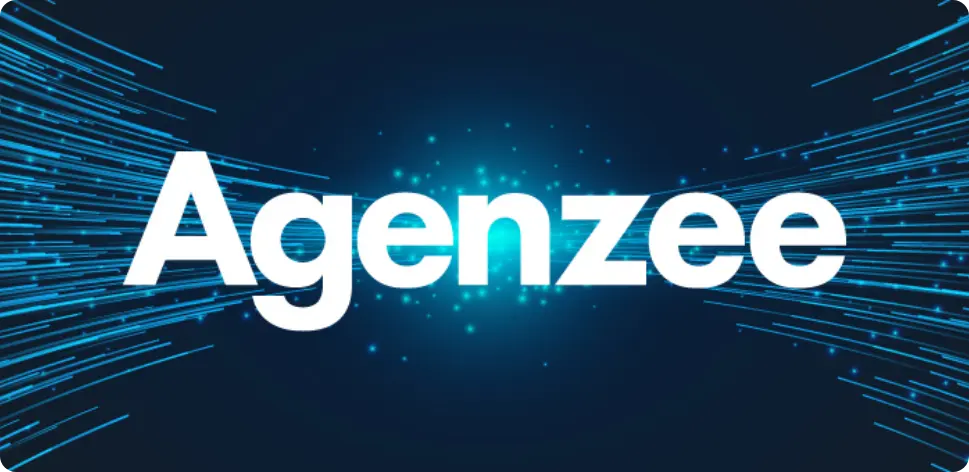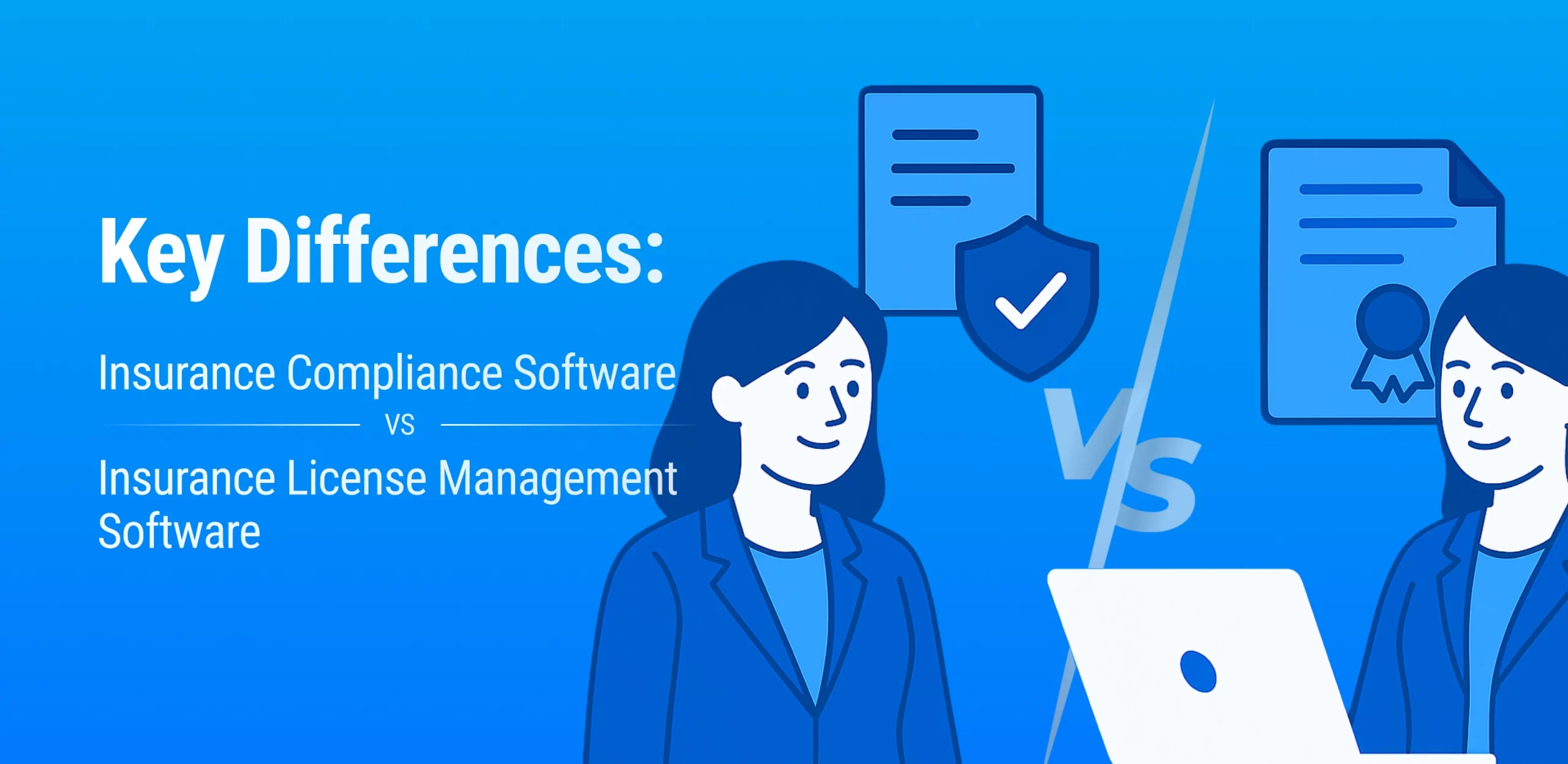Five Big Problems Insurance Teams Will Face in 2026
Insurance exists to protect people and support their most important needs. Yet in many offices, outdated processes still dominate, making daily operations harder than they should be. Paper files, scattered documents, and disconnected systems create delays, errors, and unnecessary costs. This article outlines five common challenges facing insurance teams today and provides straightforward steps to solve them.
1. License Tracking by Hand Leads to Trouble
Many teams still maintain license information in spreadsheets, email folders, or paper files. While manageable at first, over time this approach becomes messy and risky.
Why this is a problem
When data is spread across multiple locations, it’s hard to know which copy is accurate. Typos, misplaced files, and unclear ownership create errors. If the primary staff member is absent, work can stall. Small problems quickly compound into bigger issues.
What this costs a team
Manual tracking can delay sales, force staff to fix preventable errors, and frustrate clients. Teams spend hours on corrective work instead of activities that grow the business.
What to do about it
Centralize license records in a secure online system accessible to the team. Use software that sends automated reminders before licenses need attention. Attach relevant documents to each record and ensure multiple team members understand the process.
2. Outdated Systems That Don’t Communicate Slow Work
When systems can’t share data with each other, staff must manually re-enter information, which wastes time and increases mistakes.
Why this is a problem
Re-entering data across multiple systems consumes time and increases the chance of mistakes. Managers lack a complete, real-time view of operations when data is fragmented.
How this hurts the team
Repetitive tasks frustrate staff and limit growth. Adding new products or scaling services becomes cumbersome and inefficient.
What to do about it
Choose modern, cloud-based systems that integrate with other tools. Ensure platforms work on mobile devices to enable work in the field. Integration reduces repetitive work, improves accuracy, and provides clear visibility across the business.
3. Changing Rules Make Compliance Difficult
Insurance rules come from many sources and are constantly evolving, complicating license tracking, training, and reporting.
Why change is hard
Each state or regulatory body may have different requirements. Teams that react only after changes occur face rushed processes and unnecessary stress.
How this affects the business
Non-compliance can lead to penalties or corrective work. Staff spend more time fixing errors than serving clients or pursuing new business opportunities.
What to do about it
Use tools that monitor regulatory changes and provide alerts. Assign a dedicated person or small team to track updates and share them promptly. Plan renewals and training proactively rather than waiting until deadlines approach.
4. Too Much Dependency on One Person — a Big Risk
Many offices depend heavily on one employee who knows the workflow, file structure, or key vendor contacts.
Why this is risky
If that person is unavailable or leaves, critical processes can stall. Knowledge departs with them, forcing others to reconstruct procedures.
How this hurts the team
Work slows, vendor relationships may suffer, and staff spend time rebuilding processes instead of serving clients.
How to avoid the risk
Document key processes in a shared location and train at least two people for each critical task. Maintain multiple vendor contacts to ensure continuity if someone is absent.
5. Lack of Real-Time Visibility Leads to Delayed Action
Teams often rely on reports that reflect past events, making it hard to respond to current issues.
Why old reports are a problem
By the time a report is produced, situations may have already changed. Managers can’t easily identify who needs help in real time, allowing small problems to escalate.
How this hurts the business
Delayed awareness means missed opportunities and larger problems that take longer to fix.
How to fix this
Use dashboards that display real-time information for licenses, tasks, and sales. Set alerts for early warning signs. Empower staff with tools to generate quick reports without relying on IT.
Easy steps to start improving today
Change doesn’t have to happen all at once. Small, strategic steps make a meaningful difference:
- Centralize critical records in a secure online system.
- Set up automatic reminders for key dates.
- Train at least two people for each essential task.
- Choose tools that integrate with each other to reduce redundant work.
- Start using a simple dashboard to monitor important processes.
These small changes reduce errors, improve efficiency, and allow staff to focus on higher-value work. Over time, they create a calmer, more productive office.
How to pick the right tools
When selecting a platform, prioritize features that simplify daily work and protect data:
- Centralized storage for records and documents.
- Automatic reminders and clear task lists.
- Real-time dashboards for current status.
- Easy migration for legacy records.
- Robust security features.
- Mobile access for staff in the field.
A tool that is simple and used is better than a complex system that sits idle.
Tips to make change smooth
Changing systems can feel big, but it does not need to be painful.
Start small
Move one process at a time. Make sure it works well before adding more.
Ask the team
Talk to staff and ask what will help them most. Let them try the tool and give feedback.
Train and document
Show people how to use the tool. Keep short guides that are easy to follow.
Check and improve
Watch the dashboard and fix the parts that are hard to use. Small updates make the system work better.
FAQs
Q.1 What is a manual license system?
It is using spreadsheets, paper, or email to track licenses instead of an online tool.
Q.2 Can modern tools stop compliance mistakes?
Good tools reduce risk by sending reminders and storing records in one place.
Q.3 Is changing systems expensive?
Starting small often saves money and improves efficiency over time.
Q.4 What is a live dashboard?
A real-time display of work status that allows managers to act quickly.
Closing thought
Many challenges for insurance teams stem from scattered files, outdated processes, and disconnected systems. Centralizing work and adopting modern tools makes daily tasks easier, protects revenue, and improves client satisfaction. Start small, train your team, and use dashboards to track progress. Over time, these steps reduce stress and create a more efficient, effective office.






